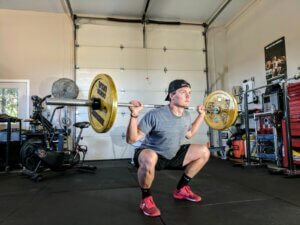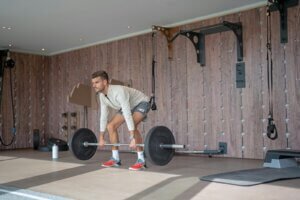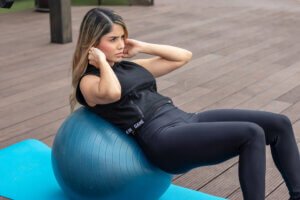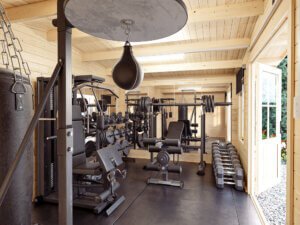Are you tired of driving to the gym every day, waiting for equipment, and dealing with crowded spaces? Well, it’s time to take matters into your own hands and create a DIY home gym workout area in your garage. With a few simple steps, you can transform this often-overlooked space into your personal fitness sanctuary. Say goodbye to monthly membership fees and hello to convenience, as you design a space that fits your fitness goals and preferences. Whether you’re a yoga enthusiast, weightlifting junkie, or just looking to stay active, this article will guide you through the process of setting up your very own home gym in your garage.
Choosing the Right Equipment
Assessing Your Fitness Goals
When it comes to setting up a home gym, it’s important to start by assessing your fitness goals. Are you looking to lose weight, build muscle, improve cardiovascular health, or simply stay fit? Understanding your goals will help you determine the type of equipment you need to invest in. For example, if your main goal is to build muscle, you may want to focus on strength training equipment such as dumbbells and barbells. On the other hand, if you’re aiming to improve cardiovascular fitness, you may want to consider cardio equipment like a treadmill or stationary bike.
Considering Your Budget
Another important factor to consider when choosing the right equipment for your home gym is your budget. Home gym equipment can range from affordable to quite expensive, so it’s essential to determine how much you’re willing to spend. Evaluate the equipment you need and research different brands and models to find options that fit within your budget. Remember, investing in quality equipment will ensure longevity and a better workout experience in the long run.
Space and Storage Options
Before purchasing any equipment, it’s crucial to consider the available space in your home gym area and the storage options you have. Measure the dimensions of your space to ensure that the equipment you choose will fit comfortably without hindering your ability to move around or perform exercises properly. Additionally, think about storage solutions to keep your equipment organized and easily accessible. Wall-mounted racks, shelving units, or designated storage boxes can help keep your home gym clutter-free and efficient.
Setting Up the Space
Clearing and Cleaning the Area
To create an inviting and motivating home gym environment, start by clearing the area of any unnecessary clutter. Remove any items that are not related to your fitness goals and find a proper place for them in your home or garage. Once the area is clear, give it a thorough cleaning. Dust off any surfaces, sweep the floors, and ensure the space is free of any hazards that could potentially cause accidents during your workouts.
Installing Proper Flooring
The flooring in your home gym area plays a crucial role in creating a safe and comfortable workout space. If your garage or home gym area has a concrete floor, consider adding a layer of rubber or foam flooring. This will provide cushioning and shock absorption, reducing the risk of injury while allowing for better stability during exercises. Installing proper flooring will also help protect your equipment from damage caused by dropping weights or other impacts.
Organizing Equipment and Storage
To maximize the functionality of your home gym, it’s important to have a well-organized equipment and storage system. Determine the most efficient layout for your equipment, considering factors such as accessibility and the flow of your workout routine. Utilize storage solutions such as shelving units, hooks, or storage boxes to keep your equipment neatly organized when not in use. This will not only make your workouts more enjoyable, but it will also help prolong the life of your equipment by keeping it in proper condition.
Basic Equipment for a Home Gym
Dumbbells and Barbells
Dumbbells and barbells are essential for any home gym setup, as they allow for a wide range of strength training exercises. Dumbbells are great for targeting specific muscle groups and can be adjusted to different weights, making them suitable for users of all fitness levels. Barbells, on the other hand, are ideal for compound movements such as squats, deadlifts, and bench presses. Investing in a variety of weights will give you the flexibility to progress and challenge yourself as you get stronger.
Resistance Bands
Resistance bands are versatile and affordable tools that can be used for a full-body workout. They provide resistance throughout the entire range of motion, helping to build strength and improve stability. Resistance bands come in different levels of resistance, allowing you to easily adjust the intensity of your workouts. They are also lightweight and portable, making them a convenient option for those who are on the go or have limited space in their home gym.
Exercise Mat
An exercise mat is an essential piece of equipment for any home gym, providing a comfortable and stable surface for floor exercises. It not only cushions your body during exercises but also protects your flooring from scratches or impact. Choose a high-quality, durable exercise mat that is thick enough to provide adequate cushioning and grip. This will ensure your comfort and safety while performing exercises such as yoga, Pilates, or core workouts.
Weight Bench
A weight bench is a versatile piece of equipment that allows for a variety of exercises, including chest presses, shoulder presses, and tricep dips. When choosing a weight bench, opt for a sturdy and adjustable one that can be inclined or declined to accommodate different exercises and user preferences. A weight bench will significantly expand the range of exercises you can perform in your home gym, enabling you to target various muscle groups effectively.
Pull-Up Bar
A pull-up bar is an excellent addition to any home gym, as it targets multiple upper body muscles, including the back, shoulders, and arms. There are various types of pull-up bars available, including doorway-mounted bars, wall-mounted bars, and freestanding bars. Choose the one that fits your space and installation preferences. Adding a pull-up bar to your home gym will provide you with the opportunity to strengthen your upper body and improve your grip strength.
Cardio Equipment
Treadmill
A treadmill is a popular choice for those who enjoy running or walking as part of their cardio routine. It provides a convenient and controlled environment for cardiovascular workouts, allowing users to adjust speed and incline to simulate different terrains and intensities. When selecting a treadmill, consider factors such as motor power, track size, cushioning, and additional features like heart rate monitors or built-in workout programs. A treadmill can be a significant investment but can greatly enhance your cardiovascular fitness at home.
Stationary Bike
A stationary bike is another excellent option for cardiovascular exercise, particularly for those who prefer low-impact workouts or have joint issues. It provides a smooth and consistent cycling motion, allowing you to control the intensity of your workout. Stationary bikes come in different styles, such as upright or recumbent, with varying resistance levels and built-in features like digital displays or pre-programmed workouts. Choose a stationary bike that suits your comfort, fitness level, and overall fitness goals.
Elliptical Trainer
An elliptical trainer offers a low-impact, full-body workout that targets both the upper and lower body muscles. It simulates movements similar to running, walking, or climbing stairs while minimizing joint stress. When shopping for an elliptical trainer, look for features like adjustable resistance, stride length, and handlebars with built-in pulse sensors. Investing in an elliptical trainer will provide you with a comprehensive cardiovascular workout that is gentle on your joints.
Skipping Rope
A skipping rope, also known as a jump rope, is a simple and affordable cardio equipment option that can be easily incorporated into your home gym routine. Skipping rope exercises offer a high-intensity, calorie-burning workout while improving overall cardiovascular fitness, coordination, and agility. Choose a skipping rope with an appropriate length for your height and ensure that it has comfortable handles with good grip. Adding a skipping rope to your home gym will allow you to enjoy cardiovascular workouts even in limited spaces.
Strength Training Equipment
Power Rack
A power rack, also known as a squat rack or power cage, is a versatile piece of equipment that provides safety and support during heavy strength training exercises. It consists of a sturdy frame with adjustable safety bars and hooks for holding a barbell. A power rack allows you to perform exercises such as squats, bench presses, overhead presses, and pull-ups with added stability and safety. When choosing a power rack, look for one that has a weight capacity suitable for your strength training goals and offers additional features like pull-up bars or dip handles.
Weight Plates
Weight plates are essential for strength training exercises as they provide the necessary resistance to challenge your muscles and promote muscle growth. They come in various sizes and weights, allowing you to customize the load according to your fitness level and exercise requirements. Invest in a set of weight plates that can be easily added to barbells or weight machines, ensuring that you have a range of weights to progressively challenge yourself as you get stronger.
Kettlebells
Kettlebells are iron weights with a handle, offering a unique and effective way to build strength, endurance, and power. They allow for a wide range of exercises, including kettlebell swings, squats, lunges, and Turkish get-ups. Kettlebells come in different weights, so choose a set that provides a variety of challenging options for your strength training routine. The versatility of kettlebells makes them a valuable addition to any home gym, allowing you to target multiple muscle groups and improve overall functional fitness.
Medicine Balls
Medicine balls are weighted balls that come in different sizes and weights, designed to be held and manipulated during exercises. They are excellent for adding resistance to exercises like squats, lunges, Russian twists, and overhead slams. Medicine balls provide a dynamic and engaging workout experience, targeting multiple muscle groups and improving core strength, coordination, and stability. Choose a variety of medicine balls with different weights to accommodate different exercises and fitness levels in your home gym.
Functional Training Equipment
Suspension Trainer
A suspension trainer, such as the popular TRX system, offers a unique and challenging way to build strength, stability, and flexibility. It consists of adjustable straps that allow for bodyweight exercises using your own body as resistance. Suspension trainers can be anchored to a door, wall, or ceiling, providing endless possibilities for exercises such as push-ups, rows, lunges, and planks. When selecting a suspension trainer, ensure that it is of high quality and includes proper anchoring options for your home gym setup.
Battle Ropes
Battle ropes are thick, heavy ropes that can be used for a variety of exercises to target strength, endurance, and cardiovascular fitness. They provide a full-body workout, engaging the muscles in your arms, back, and core. Battle ropes can be anchored to a sturdy post or wall mount and used for movements like waves, slams, or rope pulls. Investing in battle ropes will add variety and excitement to your home gym workouts while challenging your muscles in new and dynamic ways.
Plyometric Box
A plyometric box, also known as a jump box, is a versatile piece of equipment that offers a range of plyometric exercises to increase explosive power, agility, and cardiovascular fitness. It can be used for exercises such as box jumps, step-ups, or lateral jumps. Plyometric boxes come in different heights, allowing you to progress in your training and target different muscle groups. Look for a plyometric box that is sturdy, non-slip, and easily stackable for convenient storage in your home gym.
Hanging Rings
Hanging rings, also known as gymnastic rings, offer a challenging and effective way to build upper body and core strength. They can be attached to a ceiling or a high bar and used for exercises such as dips, rows, or ring push-ups. Hanging rings provide an unstable surface, requiring greater stabilization and engaging more muscles compared to traditional resistance exercises. Invest in high-quality hanging rings that have adjustable straps and are able to support your body weight to enjoy the benefits of this versatile training tool.
Adding Variety with Accessories
Exercise Ball
An exercise ball, also known as a stability ball or Swiss ball, is a versatile accessory that can be used to improve balance, core strength, and flexibility. It can be incorporated into a wide variety of exercises, such as abdominal crunches, planks, or back extensions. Choose an exercise ball that is the appropriate size for your height and weight, ensuring that it is firm enough to provide stability during exercises. An exercise ball adds fun and challenge to your workouts, allowing you to engage more muscles and improve overall functional fitness.
Foam Roller
A foam roller is a self-massage and recovery tool that helps release muscle tension, increase flexibility, and prevent injuries. It can be used for self-myofascial release, which involves applying pressure to specific areas of the body to release tightness or knots in the muscles. Foam rollers come in different densities, so choose one that suits your needs and comfort level. Incorporating foam rolling into your home gym routine will help alleviate muscle soreness, improve mobility, and enhance overall workout performance.
Yoga Mat
A yoga mat is an essential accessory for any home gym, providing a comfortable and non-slip surface for yoga, Pilates, or stretching exercises. It cushions your body and provides stability during poses or movements, ensuring a safe and comfortable workout experience. Choose a yoga mat that is durable, non-toxic, and easy to clean. Having a dedicated yoga mat in your home gym will encourage you to incorporate stretching and flexibility exercises into your routine, promoting relaxation and overall well-being.
Resistance Bands
Resistance bands are not only basic equipment for a home gym; they can also be used as versatile accessories to enhance your workouts. In addition to being used for strength training exercises, they can be utilized for warming up and activating muscles, as well as for improving flexibility and mobility. Experiment with different resistance levels and exercise variations to target different muscle groups and add intensity to your workout routine. Including resistance bands in your home gym setup will provide you with endless possibilities for challenging and effective exercises.
Jump Box
A jump box, also known as a plyometric box, can also serve as an accessory to add variety and challenge to your workouts. It can be used in combination with other exercises to increase the intensity or difficulty. For example, you can perform step-ups, lateral jumps, or box jumps using the jump box. Choose a jump box that suits your fitness level and preferences, ensuring that it is sturdy and offers a non-slip surface for added safety. Adding a jump box to your home gym will provide you with a fun and effective way to elevate your workouts.
Safety Measures and Considerations
Proper Lighting and Ventilation
When setting up your home gym space, ensure that it is well-lit and properly ventilated. Sufficient lighting will not only make your workouts more enjoyable but also help prevent accidents and injuries caused by tripping over equipment or obstacles. Adequate ventilation, such as windows or fans, will promote air circulation and prevent the build-up of moisture and odors, creating a more comfortable and safe environment for your workouts.
Mirrors and Flooring for Safety
Installing mirrors in your home gym area can be beneficial for safety reasons. Mirrors allow you to monitor your form during exercises and ensure proper alignment, reducing the risk of injury. They also create a sense of space and can make your home gym feel more open and inviting. Additionally, choose a flooring option that provides adequate grip and traction to prevent slips or falls. Rubber or foam flooring, as mentioned earlier, can provide cushioning and protect both you and your equipment.
Electrical Safety
If your home gym contains electrical equipment such as treadmills or stationary bikes, ensure that the electrical components are in good condition and free from any potential hazards. Always plug your equipment into grounded outlets and use surge protectors to prevent electrical damage. Avoid running extension cords across the floor or using damaged or frayed cords. Prioritize safety by consulting a professional electrician if you have any concerns or need to install additional outlets for your equipment.
Safety Tips during Workouts
Regardless of the type of equipment you choose for your home gym, it’s essential to follow safety tips while working out. Start by warming up properly before each session to increase blood flow and prepare your muscles for exercise. Use proper form and technique during exercises to prevent injuries and maximize the effectiveness of your workouts. Listen to your body and avoid overexertion or pushing beyond your limits. Finally, always stay hydrated and have a first aid kit nearby in case of minor injuries. If you have any pre-existing medical conditions or concerns, consult with a healthcare professional before starting a new exercise program.
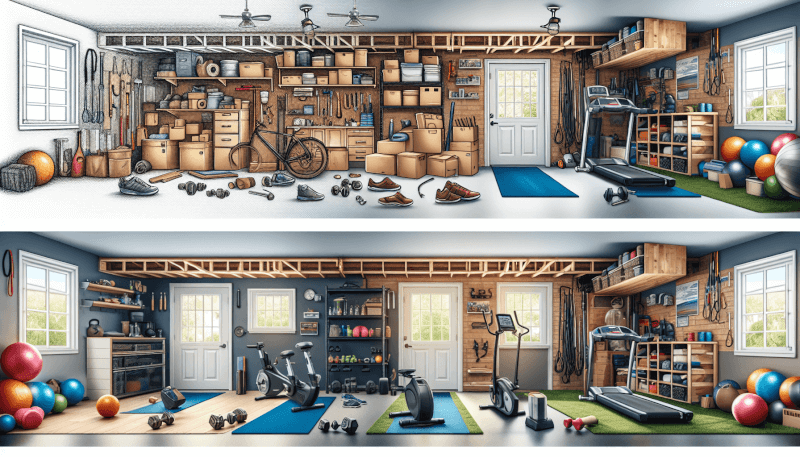
Creating a Workout Plan
Defining Your Fitness Goals
Before you can create a workout plan for your home gym, it’s important to define your fitness goals. Take some time to reflect on what you want to achieve, whether it’s specific weight loss, increased strength, improved endurance, or overall fitness. By setting clear goals, you can tailor your workouts to focus on the areas you want to improve and track your progress over time.
Designing a Balanced Routine
A well-rounded workout routine should include a combination of cardiovascular exercise, strength training, and flexibility work. Aim for at least 150 minutes of moderate aerobic activity or 75 minutes of vigorous aerobic activity per week, along with two or more days of strength training targeting all major muscle groups. Incorporate stretching exercises or activities like yoga or Pilates to maintain flexibility and improve mobility. Design your routine based on your fitness goals, preferences, and available time, ensuring that you have a good balance of different types of exercises.
Mixing Cardio and Strength Training
To maximize the benefits of your workouts, it’s important to incorporate both cardio and strength training exercises into your routine. Cardiovascular exercises, such as running, biking, or using cardio equipment like a treadmill or elliptical trainer, improve heart health, burn calories, and increase endurance. Strength training exercises, on the other hand, help build lean muscle mass, increase metabolism, and improve overall strength and functionality. Combine these two types of exercises within your weekly routine to enjoy a comprehensive and well-rounded workout experience.
Incorporating Rest Days
Rest days are just as important as workout days when it comes to creating an effective workout plan. Allowing your body time to recover and repair itself is crucial for preventing injuries and maximizing the benefits of your workouts. Aim for at least one or two rest days per week, where you can engage in light activities such as walking, stretching, or yoga. Listen to your body and take additional rest days as needed, especially if you feel fatigued or experience muscle soreness.
Maintaining the Home Gym
Cleaning and Organizing Regularly
Maintaining a clean and organized home gym is essential for both the longevity of your equipment and the overall enjoyment of your workouts. Clean your equipment regularly, wiping down surfaces and removing any sweat or moisture to prevent rust or damage. Also, take the time to organize your equipment and storage system, ensuring that everything is in its proper place and easily accessible. Regular cleaning and organizing will not only keep your home gym looking and smelling fresh but will also help you stay motivated and focused during your workouts.
Inspecting and Maintaining Equipment
To ensure the safety and functionality of your equipment, it’s important to inspect and maintain it regularly. Check for any signs of wear and tear, loose or damaged parts, or unusual noises during use. Follow the manufacturer’s recommendations for maintenance and perform any necessary adjustments or repairs promptly. Regularly lubricate any moving parts to ensure smooth operation and regularly tighten bolts or screws as needed. By taking good care of your equipment, you’ll prolong its lifespan and provide yourself with a safe environment for your workouts.
Renewing and Updating Accessories
Over time, you may find that some of your accessories need to be renewed or updated. Exercise mats may wear out or lose their cushioning, resistance bands may lose their elasticity, or foam rollers may become compressed. Stay proactive and replace these accessories as needed to ensure your comfort, safety, and optimal performance during workouts. Additionally, consider adding new accessories to your collection to add variety to your routines and keep yourself motivated. Experimenting with different accessories can help you discover new exercises and techniques, keeping your home gym experience exciting and engaging.
Seeking Professional Help if Needed
If you encounter any issues with your home gym equipment that you are unable to address, it’s essential to seek professional help. Whether it’s an electrical issue, a malfunctioning machine, or a complicated repair, don’t hesitate to consult the manufacturer’s customer service or hire a qualified technician. Attempting to fix complex issues on your own can not only put your safety at risk but also potentially cause further damage to your equipment. When in doubt, always seek the expertise of professionals to ensure the longevity and safety of your home gym setup.


